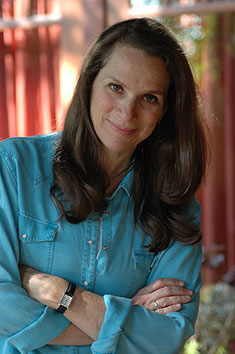published in the Los Angeles Review of Books
Wild Literary Geographies
 ONE OF THE ENDURING MYTHS of environmental journalism is that it’s either so wonky or dire that no one wants to read it. It’s too depressing. And all the false on-the-one-hand-on-the-other equivalences of climate change coverage in recent years have only served to ratchet up public cynicism. Those, at least, are some of the reasons given for the draconian cutbacks in environmental coverage by major media outlets — and the maddening call for “upbeat” stories with happy endings about our supposedly sustainable world.
ONE OF THE ENDURING MYTHS of environmental journalism is that it’s either so wonky or dire that no one wants to read it. It’s too depressing. And all the false on-the-one-hand-on-the-other equivalences of climate change coverage in recent years have only served to ratchet up public cynicism. Those, at least, are some of the reasons given for the draconian cutbacks in environmental coverage by major media outlets — and the maddening call for “upbeat” stories with happy endings about our supposedly sustainable world.
Thankfully, there’s also a countervailing narrative that extols the virtues of the natural world and supports the argument that environmental writing — from Henry David Thoreau to Rachel Carson to Terry Tempest Williams — is, as the writer and activist Bill McGibben says in his introduction to the book American Earth: Environmental Writing Since Thoreau, “America’s single most distinctive contribution to the world’s literature.”
That assessment may sound a bit highfalutin, but few understand its grasp as well as the writer David Gessner. Gessner has written often about how his own life intersects with nature and his love of literature. In Sick of Nature, he discusses the destruction of the wilderness and his attachments to Cape Cod and Colorado. My Green Manifesto describes his journey down the Charles River in Boston and his worry that environmentalism had lost its soul. Return of the Osprey is about becoming a reluctant nature writer. His memoirs, too — like A Wild, Rank Place, about his overcoming testicular cancer and his father’s dying of lung cancer — are occasions for exploring larger themes — the relations between fathers and sons, for instance, and the links between the wild and creativity.
Gessner’s wacky sense of humor and rigorous mind, his delight in, as he calls it, “an antidote to the virtual age,” and, especially, “the lost art of lounging” — have never been more evident than in his beautifully conceived new book, All the Wild That Remains: Edward Abbey, Wallace Stegner, and the American West. This timely mash-up of environmental journalism, biography, travel writing, and literary criticism has Gessner hitting the road in search of the real story behind “two of the most effective environmental fighters of the 20th century.”
What emerges is a joyful adventure in geography and in reading — and in coming to terms with how the domestic and the wild can co-exist over time. “We might be able to intellectually understand that the West has lost 18 percent of its trees over the last 20 years,” he writes, “and at the same time be overcome by the quaking of a single aspen leaf.”
Though polar opposites in personality and outlook, Stegner and Abbey both believed that wilderness is “vital to the American soul.” And they serve as the yin and yang to Gessner’s own conflicted self — the professorial academic versus the ultimate frisbee hedonist. Stegner, the buttoned-down realist, sought to dismantle the Western myth of the cowboy through his prose and politics, whereas Abbey, the wild and wooly misanthrope, exploited it. Abbey’s significance today, Gessner explains, is “that he took this do-gooding, dorky thing called environmentalism — he hated the passionless, scientific sound of the word — and made it exciting, the province of the outlaw. He also made it fun.”
Far from sounding an End of the World helplessness, Gessner’s exploration of his literary heroes is grounded in empathy. “Wally” Stegner may have been a hippie-hating moderate, but the legislation that became the landmark 1964 Wilderness Bill and the creation of Utah’s Canyonlands National Park were the result of his hard work — the boring kind that required endless meetings with politicians, slogging through committees, and activating public support. He viewed his environmental work as more than a job: it was nothing short of duty.
And despite his remarkable accomplishments in academia — Stegner created Stanford’s Creative Writing Program in 1945 and influenced the likes of Ken Kesey, Larry McMurtry, Raymond Carver, Wendell Berry, and Edward Abbey — the East Coast intelligentsia repeatedly snubbed him. His Pulitzer Prize–winning novel, The Angle of Repose, was never reviewed by The New York TimesBook Review, though it did publish an essay taking the Pulitzer committee to task for giving Stegner the award.
Abbey’s novel The Monkey Wrench Gang — featuring characters who destroy billboards, fill the gas tanks of bulldozers with sugar, and scheme to destroy dams — became the inspiration for Earth First! and its real-life environmental sabotage, meant to delay development and publicize the wreckage of vulnerable ecosystems. Given his love of red meat, firearms, and big cars — and his littering of roadsides with empty beer cans — Abbey was more gonzo than crunchy-granola liberal.
Gessner glosses over Abbey’s misogynistic and xenophobic ramblings, excusing them as one might a racist relative at Thanksgiving. Instead, he exalts Abbey’s classic nonfiction book Desert Solitaire — about his year as a ranger at Arches National Monument near Moab, Utah — as his most influential work. It is his “raw joy” on the page that Gessner most cherishes, “a Thoreau with a gun and a pickup truck, a Thoreau with a beer in hand and a trailer instead of a cabin.”
Gessner begins his road trip in the summer of 2012 — a summer of conflagration and raging firestorms in the West — with a stop in Kentucky to see the illustrious writer Wendell Berry, who advises him to consider that every writer “needs the way lighted” by other writers. It’s a kind of grace. “If you think you know all the ones who have lighted your way, you’re nuts,” Berry says. “You don’t know, because you can’t.” Lighting the way for Gessner, of course, are Abbey and Stegner.
But he also receives some essential advice from conservationist author Terry Tempest Williams, who tells him to consider the paradox that underlies his two subjects — that Stegner may have been the more radical of the two — and Gessner’s analysis of how that might be true leads him to the wilderness of the human heart.
Gessner, a gifted cartoonist who grew up in Worcester, Massachusetts, and now lives in Wilmington, North Carolina — where he teaches nonfiction writing and edits Ecotone, a literary magazine — writes that All the Wild That Remains had its origins when he moved to Colorado as a 30-year-old graduate student and was introduced to the writings of Abbey and Stegner. He also vividly remembers how it felt to first stand in awe of the Rocky Mountains. So when he returns with his nine-year-old daughter, Hadley, and she views the Rockies for the first time, one gets the feeling that the generational tug of continuity has yet to play itself out — especially when Hadley pipes up in the back seat about her obsession with wolves.
In fact, my one quibble with this book is that I would like to have heard more from Hadley. The father-daughter scenes are especially poignant — how Gessner transmits his love of the West to his daughter and why, including when he anxiously invokes his mother’s voice — We have to make a good impression — to Hadley in Montana before they meet the real grizzly man, Abbey’s pal Doug Peacock. The message on Peacock’s doormat: COME BACK WITH A WARRANT.
The history of the West, Gessner reminds us by invoking Stegner, has been a history of pretending. Gessner does the opposite by opening his eyes to the real: to the area’s stunning petroglyphs, water crisis, diminished territory for pronghorns, and need for “rewilding.” “The primary unity of the West,” Stegner wrote, “is the shortage of water.” His prophetic words help put the current California drought in perspective.
Gessner also reports on recent changes in the land that Abbey and Stegner loved. In Vernal, Utah, for example, he discovers a fracking boomtown where property taxes and crime have risen along with employment from the new industry. But local air quality has suffered, and millions of gallons of water are used to extract oil. The environmental impacts are disturbing, and the distribution of profits from the industry grossly unequal.
Gessner places Vernal’s problems in the larger context of what it means to strike it rich in the West. No matter what the industry — whether mining, ranching, agriculture, tourism, or fracking — the idea that this is a land of limitless opportunity is sadly negated by the fact that its resources are all too finite, and its ecosystems fragile.
Whether interviewing a retired FBI agent about how environmentalists became labeled “terrorists” post-9/11, or paddling an inflatable kayak down the muddy San Juan River with a group of young Navajo activists — who uproot invasive species as Gessner riffs on what, exactly, it means to be invasive in America — Gessner proves to be an amiable guide, an aging, beer-loving jock who zooms off on his bicycle into the canyons of Utah and comes to terms with his own middle-aged aches and pains with the same clear-eyed resignation as his admission that, after two years with him, he has, frankly, grown weary of Ed Abbey and his “silly sloppy” book.
But Gessner also digs deep, questioning whether “it will become more difficult to ignore darker truths, to stop ourselves from seeing things, ugly things, that deflate us.” The fight to tell the truth may have worn Stegner down, he knows, and things are dire. But Gessner’s intrepid spirit gives some hope, even as he provides a renewed understanding of the true vulnerability of the American West and “our usual chronic restlessness and rapacity” to possess it as our own.
¤
published in the Los Angeles Review of Books



